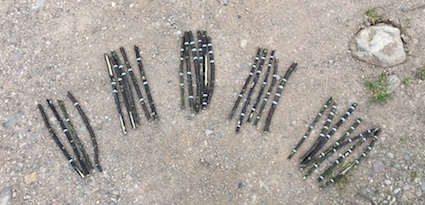
Subitising is the ability to look at a number of objects and know how many are there without the need to count each object. It is an important skill in terms of being a good maths thinker. The Scottish Government have produced benchmarks for early numeracy and subitising is mentioned:
Identifies ‘how many?’ in regular and irregular dot patterns, arrays, five frames, ten frames and dice without having to count (subitising).
This particular benchmark, leaves me concerned. Very young children can quickly distinguish between different known patterns. A child who has been exposed to Numicon, for example, will quickly learn the pattern recognition, not least on the basis of the colours used. Distinguishing between one, two and three objects is easy to pick up – apparently research has been done on this with babies. Recognising dice patterns is easily acquired through playing games with dice.

The true test of subitising is when other layouts and formations are provided. A while back I started playing around with white stripes on sticks. What fascinates me, is that they make my brain work. I’m an adult, used to working with number yet these sticks challenge me. Thus I’m faced with a predicament – either the concept of subitising beyond three is too challenging for anyone. Or, it’s fine if it’s known patterns. If it’s not, then my brain finds subitising very tricky. Thus I feel due diligence is needed when interpreting such a specific benchmark in order to ensure it is fit for purpose and we are not expecting too much or too little of young children.
The stripy sticks have a variety of random stripe marks. So each number is represented in several ways. Some markings are spaced out, others are closer together. In terms of a resource, they are surprisingly complex.
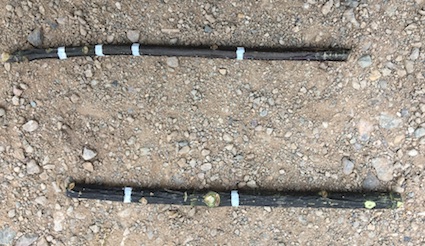
As with any resource, there is a need for children to simply use the sticks for playing, exploring and investigating. With young children they are likely to end up in all sorts of places and it’s unlikely that the sticks will remain as a neat cohesive set on a table or in a pack. Observing how children choose to play with them and the conversations that arise are crucial to our interpretation of what children perceive the sticks to be.
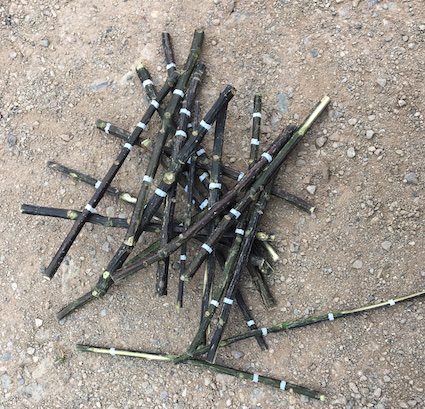
The sticks have many uses, most of which I’m yet to discover. I came up with the fairly standard ideas such as playing pick up sticks. Every stick collected can be valued by its number of stripes.
When sorting the sticks by the number of stripes, this is quite a conversation piece. Not least how different some of the sticks appear that have the same number of white stripes. This can help children develop their understanding of conservation of number – that is, no matter how the stripes are laid out, the number remains constant.
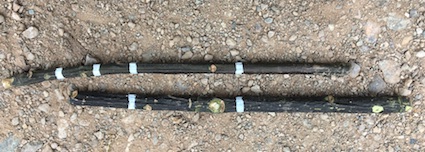
The random nature of the stripes leads to various investigations. In the photo above, I was experimenting with recognisable shapes created by ensuring the stripes from one stick touch the stripes of overlapping sticks.
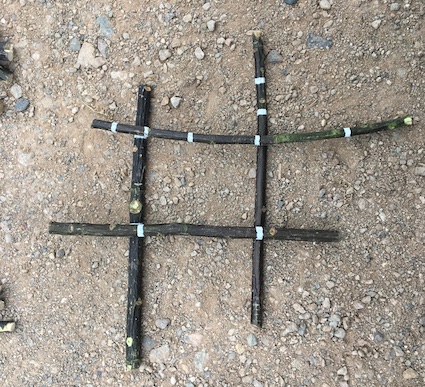
A natural progression from this experiment was to have fun creating stick patterns where the rule is that one stripe must be laid on top of another. Whilst right angled creations do not have to be the norm, I couldn’t help myself.
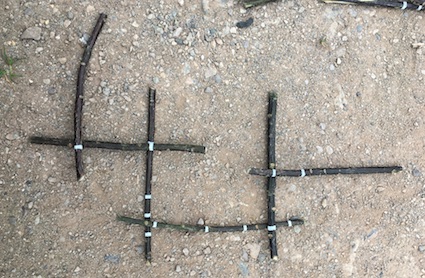
A friend, Nicola, took one look at the sticks and immediately saw their value for complimentary addition. In the photo below there were 5 stripes. Can you work out how many I am covering with my finger?
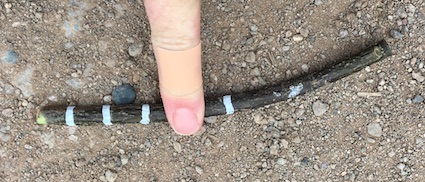
What about in the photo below? I have realised that the number of fingers I am using provides rather a large clue 🙂
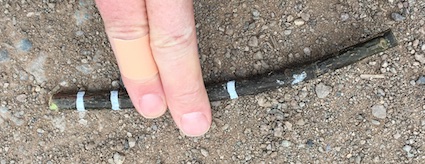
I used acrylic deco marker pens to create the patterns. After a few months of use the bark began to peel away. It may be better to use dowling or peel sticks and allow them to dry before adding paint.
This blog post was originally published in May 2017.



















